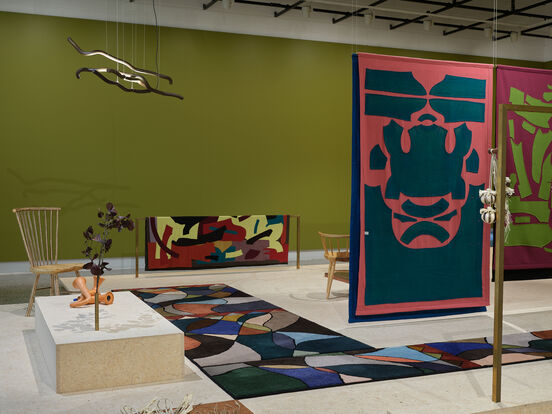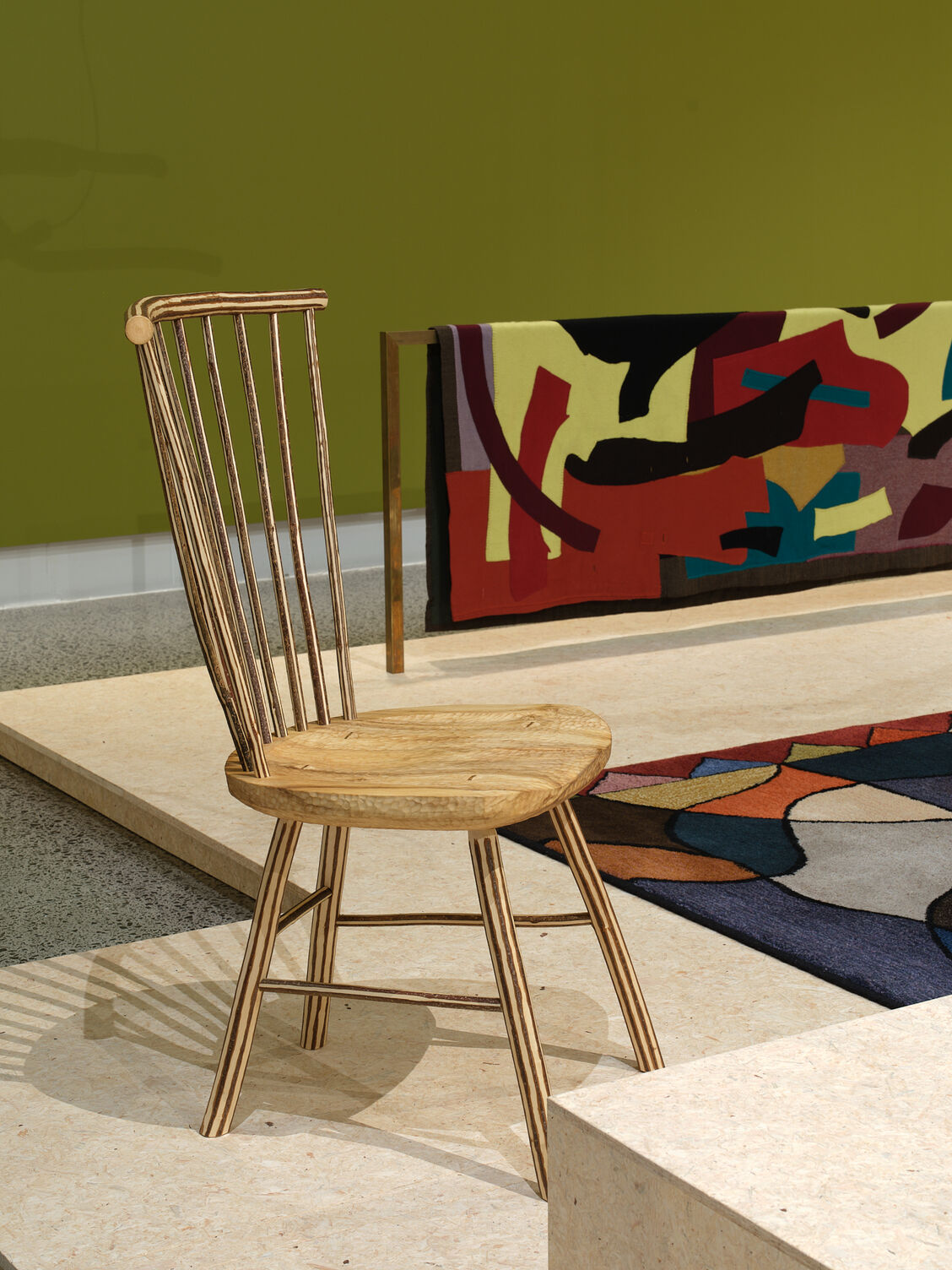How to make a home with… Vita Cochran
Vita Cochran is one of 14 artists, makers and designers exhibiting in How to make a home, a show exploring the small universe of home and the material politics of the objects and adornment we live with over time. We asked Vita four quick questions about their work in the exhibition and what makes a home, read her responses below.
—
Objectspace: Can you briefly describe the material and making of your works in How to make a home?
Vita Cochran: The works began with a collection of coats whose colours, cuts and fabrics appealed to me. Observing a set of self-imposed rules (no cutting of fabric, no omission of parts, preserving the traces of wear), I carefully unpicked these used vintage garments and re-arranged their pieces to make large scale banner-like abstractions. The garments pieces are hand-sewn on their original seam-lines to a backing fabric. The given shapes of the pieces are complex and suggestive, revealing the unseen sophistication and beguiling oddity of the pattern maker’s art. The garment pieces are then arranged symmetrically, so that they have the effect of a body-scale Rorschach.
OS: Can you share some of your thinking behind the works?
VC: Because of their scale and symmetry, the works suggest different beings and anatomies to each viewer – insects, faces, punctuation, architecture – and seem to signal, with their emphatic forms, a bold yet indecipherable message. But they are also in a sense abstract portraits of past wearers, homages to the art of pattern making, the secret lives of clothes, and a celebration of modest, everyday things made monumental.
OS: How do you feel your work connects to domestic spaces and/or the way we adorn and dress them?
VC: The Exploded Coats feature objects – coats – that once provided insulation and protection to bodies; the works themselves now adorn walls of domestic spaces which do the same.
The quilt, What the Shapes Knew, was the starting point for the Exploded Coats, and is inspired by the tradition of make-do quilting (in Australia called ‘wagga’ quilts), in which whatever materials at hand were used in the most expedient way to make a warm covering for sleeping under. Unaltered pieces of garments would make their way into these quilts. These quilts were made for necessity, and practicality, but nevertheless they are often visually compelling and rich with human stories and interest. My favourite domestic spaces are populated with such objects – objects that are idiosyncratic, have a human hand behind them, or tell the stories of people.
OS: How to make a home posits that what makes a home is the persistence of ‘things’ that inspire us to feel like we belong. Can you tell us about an object that has made, or does make, your home a home?
VC: One of my favourite pieces of furniture is a 1950s table I bought in Christchurch 15 years ago, which has a marbled green, rust, ochre and black inlaid linoleum top. It had already lived a good life when I bought it. It had been used outside and had some rust and vine remnants which I cleaned up. It’s been with us through an earthquake and four house moves (one trans-Tasman) and has sometimes been our dining table, sometimes a family projects table, but mostly it’s been my worktable. Its strong geometric pattern of intersecting diamonds and triangles has been the backdrop and accompaniment to some of my most absorbing sessions of making. Its whole surface gets covered when I’m in the middle of something, and then I tidy up and am rewarded with the pattern again. You don’t often see lino on a table; I enjoy the tenacity of this unusual piece of furniture, which mimics inlaid marble, but has a homemade modesty, does its job, holds a lot, and brings some joy.
—
More about Vita Cochran
Vita Cochran is an artist from Aotearoa now living and making on Gadigal land, Sydney, Australia. Since graduating with a MA in Art History from the University of Auckland Waipapa Taumata Rau in 1999 Vita has made art and objects combining traditional textile techniques with contemporary forms. Recent exhibitions have showcased her work with the sampler, rag rug and bag. She is currently artist in residence at the library of the University of Technology, Sydney, where she is hand embroidering realistic moths to the library’s woollen furniture. Vita’s work is held in private and public collections including those of Auckland Museum Tāmaki Paenga Hira, the Dowse Art Museum, Te Papa Tongarewa and Tūhura Otago Museum. She is represented in Aotearoa by Anna Miles Gallery.


Vita Cochran, quilt and Exploded Coats in How to make a home, 14 Sep–17 Nov 2024 at Objectspace

Vita Cochran, What the Shapes Knew, 2020 with Greg Quinn chair and Megan Brady carpet

Vita Cochran, House of Youth (Exploded Coat #2), 2022 and Cue (Exploded Coat #9), 2022

Vita Cochran, Janus (Exploded Coat #10), 2023, and Ralex (Exploded Coat #4), 2022